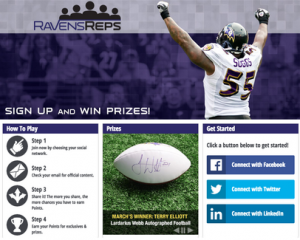
So you’re an online entrepreneur? You’ve developed a great business, established a well-oiled supply chain and your website is receiving great traffic. What more could you do?
We Need to Talk About Cart Abandonment…
Marketers need to change how we think about cart abandonment. Rather than thinking of an abandoned cart as a customer lost forever, think of it as an opportunity to build better customer relationships.
Changing your perspective on cart abandonment rates can achieve a higher return on your investment. Who doesn’t want a better ROI? After all, profit is the name of the game.
For many entrepreneurs, cart abandonment is seen as missed revenue and failed conversions. Cart abandonment is certainly a serious issue and is likely a metric that you are already paying keen attention to. The average rate of cart abandonment is 68% amongst ecommerce retailers.

This high rate of cart abandonment has many people looking for a quick fix, a way to recapture lost value. This fear has established an entire niche for marketing bloggers writing about a one-off fix. When in reality, there isn’t one.
The problem isn’t that people are jumping ship, the problem is why? How can you develop a customer base that keeps coming back for more? This is the real question you should be asking yourself.
The first step to getting into your customer’s mind is to think about it from your own perspective. In the past, what caused you to close your laptop just before you entered your credit card details?
Your data and analytics can only tell you so much, so here are some common reasons for cart abandonment.
- Too much effort, the checkout process was too complicated.
- The registration process was too long and asks too much.
- A price increase from shipping or tax can be a rude shock.
- The website takes too long to load.
- The customer has a concern over site security.
You need to stop seeing every single visitor in terms of sale/loss. Instead think of every visit as an opportunity to build on the relationship. Your shopping cart function is an opportunity to encourage loyalty and soon you’ll be building a smooth, reliable conversion rate.
Now you understand the problem, what’s the solution?
Now you understand that your shopping cart is a tool for customer loyalty.
Let’s discuss ways to encourage customers to return with their credit card over and over again.
1. A guest checkout
A great way to help new customers get used to your website and your brand is to avoid pressuring them.
Using a guest checkout is a great way to let customers browse, without feeling pressured. This is why 80% of the largest US ecommerce brands offer guest checkouts. It’s a great function for any online retailer to offer their new visitors.
Think about all the times you’ve been sent a link from a friend, only to face a paywall or an overbearing request for all your details. By offering a guest checkout, new visitors can avoid the pressure of a committing their full name or email address.
First you allow customers to save their items away during their first visit to your site. Then encourage them to sign up after they’ve added items to the basket.
By now the buyer will have grown comfortable with your site and the prospect of signing up will be far less intimidating. Even US retail monster Walmart offers a guest checkout.

Accept that the customer may want to look elsewhere to assess their options, you will convert them once they understand you offer the most value.
Once they’re satisfied, they will be more comfortable coming back in the future. To make the experience even more seamless, think about how customers are accessing your site and with what device.
2. Optimise for mobile
The smartphone is taking over the internet. While researching products, customers spend more than 15 hours a week on their smartphone. 45% of these shoppers then transfer to their tablet or laptop to actually make the purchase. This revelation is a huge opportunity for anyone looking to expand their market share.

Customers who buy will have been on your site before.
Optimizing your website for mobile shoppers is a potential competitive advantage that you can nurture to differentiate from competitors.
Think of the buyer decision making process, the smartphone visitor is a casual shopper browsing for info. This is where your site can seal the deal with an effective converting mechanism that allows for searching and saving.
Let your customer pick the products they like, so they can come back later armed with their keyboard and Visa. Think of your mobile site as your introduction to the buyer, who will come back if their experience indicates that returning will bring satisfaction later on.
3. Facilitate their future buys
The basket works, which is why every ecommerce site has a shopping cart. Through trial and error, the format has stuck. But very few offer a ‘wish list’ and those that do are reaping the rewards.
If you offer a wish list, you can rest assured that your customers will bundle all their preferred items in there for later. While only the items that customers are almost 100% sure of will make it to the shopping cart. If you offer the ‘wish list’ alternative, you create a second chance to capture the sales that customers will likely consider again.
This will address the problem of customer’s birthday and payday wish list. A great example of a ‘wish list’ is the ASOS saved item function.

ASOS are the kings of online impulse buys. They’ve been very successful with the wish list method, even allowing consumers to create a saved list as a guest, then add it to the account after sign up.
This method is even more effective with an expiry period, having the wish list refresh after 60 days adds a sense of urgency. So shoppers return for purchase before their desired product disappears into the ether forever.
4. Make sign up a snap
Once your new customers are comfortable with your brand and have experience placing items into a wish list, it’s time to think about how you capture information about your customers. I understand that data is king.
If you’re not forcing registration from the start, make sure you remind them before they go. Make sure you do it strategically and keep it simple. Too many times have I been on an ecommerce page where I feel like every piece of personal information is drawn from me like blood from a stone. This is off-putting, will damage trust and may lead to an exit.
If simplicity is the question, Facebook is the answer. If you want to capture your buyer’s data, a simple tap of a ‘Sign up with Facebook’ button is all you need. Facebook is a familiar, secure name the customer will recognize and offers a strong call to action.

Sign up pages, like this example from RY, where customers can choose between offering a few easy details, or signing up with Facebook are ideal. Giving customers the perception of choice is always a great option online.
With an email address and some contact details, you can begin to communicate more effectively with your customers.
5. Email reminders
Communicating with your customers is essential in marketing. One of the oldest tricks in the marketing handbook is direct email marketing.
A mail recovery campaign is a great way to draw customers back to their abandoned cart. Make sure you’re not too zealous, a series of three emails will do. The first a day later, the second 2 or 3 days and then a week later will be enough to activate your consumers and bring them back.

Here are just a couple of examples of great reminder campaigns.
Key things to include are vibrant and colourful pictures of their saved item, a strong call to action and a service guarantee or refund policy. You want to remind the customer of their item, stimulate their desire to purchase and alleviate any concerns, and an email is the best way to do that.
Make sure your emails aren’t sent at the same time of day as the cart abandonment, that could be the time they switch off. A good rule of thumb is to send the email 2 hours before or after to get the best result. You can use these emails to bring real customers back by reminding them of their lost items, or attempt to create a financial incentive with a discount.
6. Short-lived discounts

Discounts may bite into your bottom line, but they are one of the best ways to capture buyers who are on the fence. For items that are price elastic, a 10% discount code may be the very best thing you can offer.
A study of the effect on price discounts and bonus packs on online impulse buying found that discounts with a percentage worked more effectively for ‘hedonic’ or items purchased for pleasure. Whereas bundled items were more effective for selling utilitarian, functional items.

Be careful that you don’t inadvertently condition your buyers to expect a discount. You may run the risk of reducing the customer’s internal reference price for your store. So perhaps save your deals for first time buyers.
7. Establish a greater sense of security
If a customer has never seen your site before and they’ve found you due to a Google search or a sponsored facebook ad, they may not trust your brand enough to divulge their credit card information just yet.
A great example of managing customer concerns by establishing trust is with visual representations of security. A clear ‘Google Trusted Store’ badge offers certainty and security. Providing your customer with physical evidence of security is very important.

There is a lot of meaning embedded in the above image, the stars represent quality, the google brand is one the customer has seen many times before and the tick is an obvious symbol of competency. This gives your customer assurance that they’re in a safe place, one where they will be looked after.
Establishing trust and security as part of your brand is the icing on the cake for your e-commerce site. Once you’ve reduced all the barriers that a new buyer might perceive between their wallet and your products, then you’ll see the abandoned cart numbers dry up.
Winding down bounce rates, ramping up conversions
The point of this article is to help you understand why you’re getting so close to converting, but failing at the final hurdle.
Hopefully I’ve given you an understanding of the reason why customers are abandoning their cart. This is the first step to improving conversion rates.
By seeing every interaction with your customers as relationship management, you can begin to implement effective techniques for sustained revenue. The longer you retain a happy customer, the more they’ll purchase, the happier they’ll be to pay a price premium and word of mouth will build and build.
Make it easier for customers to trust you, to browse and select your products and then come back later to make a purchase. This will reduce the barriers for customers and you’ll see your cart’s conversion rate increase.
Digital & Social Articles on Business 2 Community(63)








